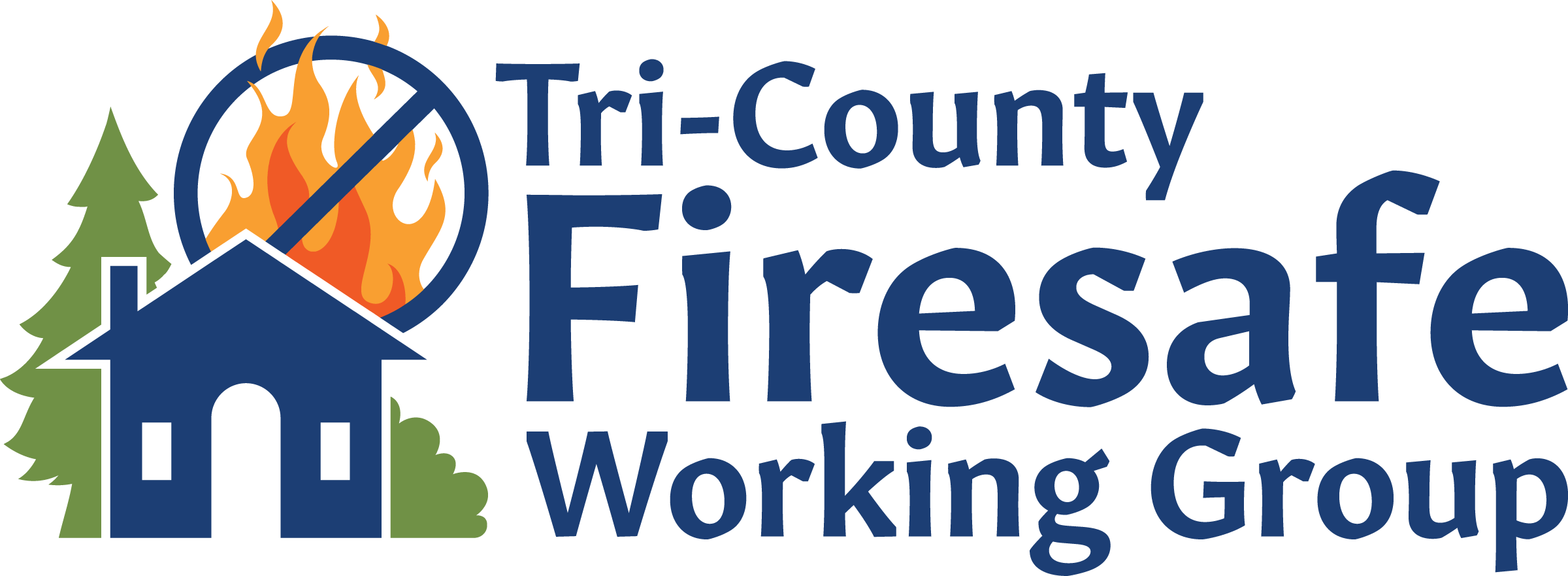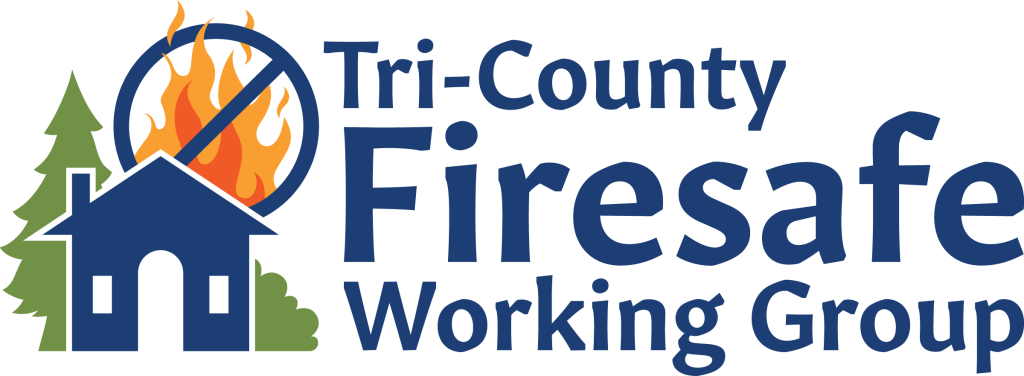Are You Ready for Wildfire?
Proudly serving the tri-county area since 1984 to promote wildfire risk awareness, mitigation, and community safety.
Why is wildfire mitigation needed?
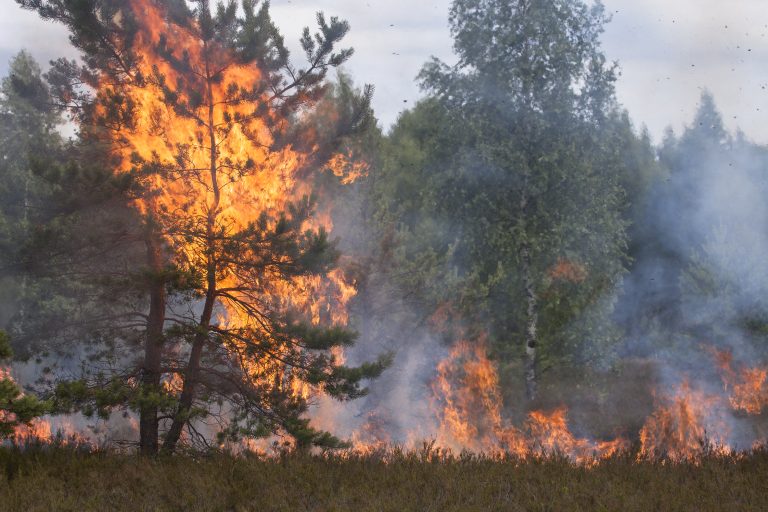
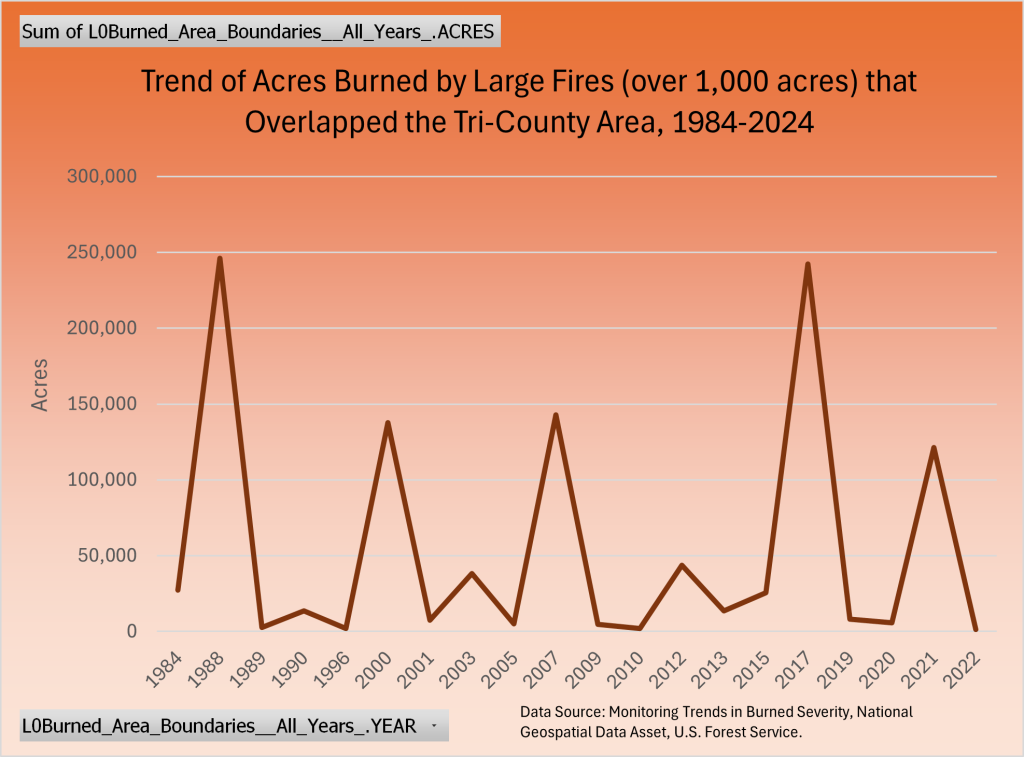
We live in a fire-prone ecosystem. Wildfire is a part of life in the Northern Rockies, and an important natural disturbance to maintain healthy, resilient ecosystems. However, historic land management practices resulted in a build-up of fuels in many areas (particularly dry, low-elevation forests). This, combined with warm and dry climate conditions, are fueling larger, more intense wildfires.
When fuels accumulate, they allow fires to burn hotter, faster and with higher flame lengths. When fire encounters areas of continuous brush or small trees it can burn these “ladder fuels” and may quickly move from a ground fire into a crown fire. Such fires can throw embers miles ahead of the flame front.
Homes and wildfire do not mix; more than ever before, homes and communities are located within the wildland-urban interface (WUI). The WUI is where homes and other structures intermingle with or are adjacent to wildland vegetation. This creates a zone where wildfires pose a greater risk to human life and property.
Research on which homes survive a wildfire point to embers and small flames as the main culprit for how a majority of homes ignite. Embers are burning pieces of airborne wood and/or vegetation that can be carried more than a mile through the wind can cause spot fires and ignite homes, debris, and other objects.
We all have a shared responsibility to promote community wildfire safety by understanding the risks and mitigating them where possible.
How Can You Be Prepared?
You can learn to live safely with wildfire! Elements of preparedness include home hardening, defensible space, and evacuation preparedness.
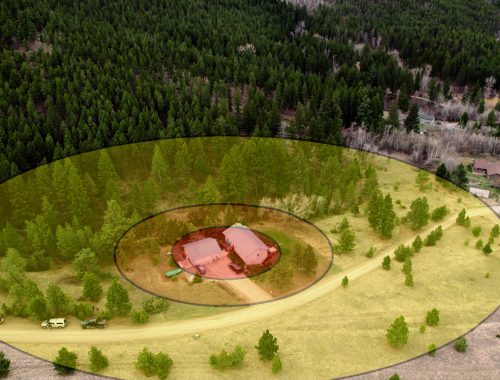


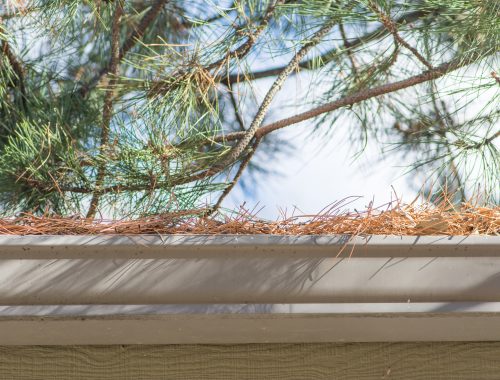

Home Hardening
While often our attention may be on the big flames and towering columns of smoke and acres of un-thinned trees, it’s the firebrands igniting pine needles in rain gutters, the dead grass or wood mulch up next to a home’s wood siding, or a wood pile next to the house that can be even more dangerous.
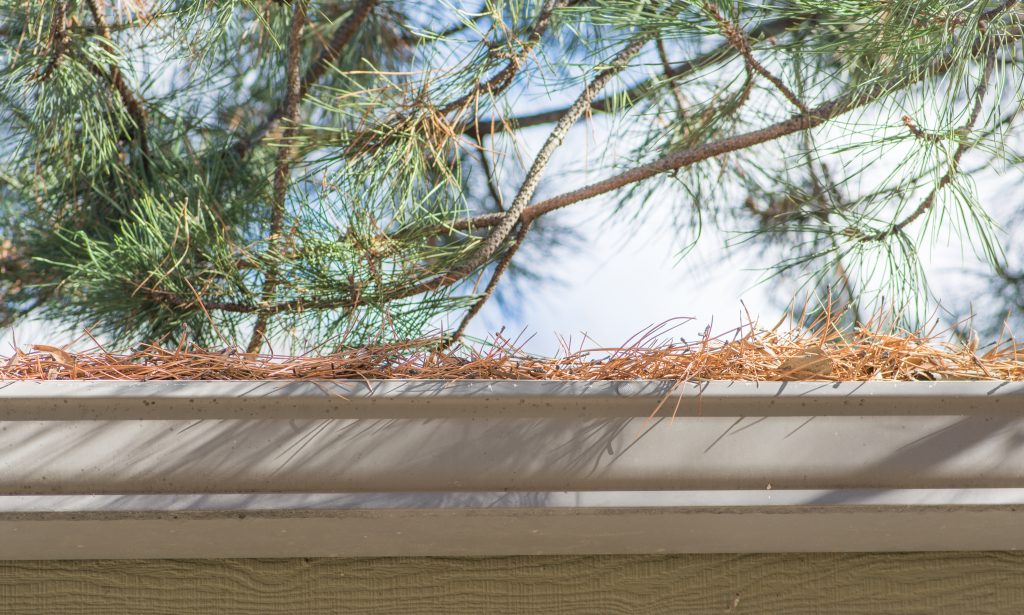
Roof & Patio Cover
The roof is the most vulnerable part of your home. Homes with wood or shingle roofs are at high risk of being destroyed during a wildfire. Build your roof or re-roof with materials such as composition, metal, clay or tile. Block any spaces between roof decking and covering to prevent embers from catching. Remove accumulated vegetative debris from the roof. Use the same materials for patio covers.
Vents
Vents on homes create openings for flying embers. Cover all vent openings with 1/16-inch to 1/8-inch metal mesh. Do not use fiberglass or plastic mesh because they can melt and burn. Use Ember and flame resistant vents (WUI vents).
Eaves & Soffits
Eaves should be boxed in (soffited-eave design) and protected with noncombustible materials.
Windows
Heat from a wildfire can cause windows to break even before the home is on fire. This allows burning embers to enter and start fires inside. Single-paned and large windows are particularly vulnerable. Install dual-paned windows with one pane of tempered glass to reduce the chance of breakage in a fire. Consider limiting the size and number of windows that face large areas of vegetation. Install screens in all usable windows to increase ember resistance and decrease radiant heat exposure.
Walls
Wood products, such as boards, panels or shingles, are common siding materials. However, they are flammable and not good choices for fire-prone areas. Build or remodel your walls with ignition resistant* building materials, such as stucco, fiber cement wall siding, fire retardant, treated wood, or other approved materials. This is especially important when neighboring homes are within 30-feet of the home. Be sure to extend materials from the foundation to the roof. Smaller spaces, such as the roof-to-wall area, should have their siding relaced with a noncombustible material.
Decks
Surfaces within 10 feet of the building should be built with ignition-resistant*, noncombustible, or other approved materials. Create an ember-resistant zone around and under all decks and make sure that all combustible items are removed from underneath your deck. If a deck overhangs a slope, create and maintain defensible space downslope from the deck to reduce the chances of flames reaching the underside of the deck.
Rain Gutters
Keep rain gutters clear or enclose rain gutters to prevent accumulation of plant debris. Install a corrosion-resistant and noncombustible metal drip edge for additional protection of the combustible components on your roof’s edge. Use a noncombustible gutter cover to prevent buildup of debris and vegetation in the gutter.
Chimney
Cover your chimney and stovepipe outlets with a non-flammable screen. Use metal screen material with openings no smaller than 3/8-inch and no larger than 1/2-inch to prevent embers from escaping and igniting a fire. Close the fireplace flue during fire season when the chimney is not being used.
Garage
Have a fire extinguisher and tools such as a shovel, rake, bucket, and hose available for fire emergencies. Add a battery back-up to the garage door motor so that the garage can easily be operated if power is out. Install weather stripping around and under the garage door to prevent embers from blowing in. Store all combustible and flammable liquids away from ignition sources. Treat windows and vents in the garage the same way as if it was a part of the house.
Fences
Best practice is to separate your fence from your house or upgrade the last 5-feet of the fence to a noncombustible material to reduce the chance of the fence from bringing fire to your home.
Driveways & Access Roads
Driveways should be built and maintained in accordance with state and local codes to allow fire and emergency vehicles to reach your home. Consider maintaining access roads with a minimum of 10 feet of clearance on either side, allowing for two-way traffic. Ensure that all gates open inward and are wide enough to accommodate emergency equipment. Trim trees and shrubs overhanging the road to allow emergency vehicles to pass.
Address
Make sure your address is clearly visible from the road.
Water Supply
Consider having multiple garden hoses that are long enough to reach all areas of your home and other structures on your property.
Defensible Space
Wildfire risk is the likelihood of a wildfire occurring and the potential negative impacts it could have. It’s a combination of hazard (likelihood and intensity of a fire) and vulnerability (exposure and susceptibility of things people care about to fire). Wildfire risk mitigation is proactive steps taken to reduce the likelihood and severity of wildfires, as well as to minimize their impact on people, property, and the environment. Defensible space is the area around a building that has been modified to slow or stop the spread of wildfire. Management of vegetation and other combustible materials creates a buffer zone that reduces the risk of fire igniting the structure and provides a safer area for firefighters.

The Home Ignition Zone
The home ignition zone is the area around a house, extending out to 200 feet, where actions can be taken to reduce the risk of a wildfire igniting the home. It’s a buffer zone around the house where homeowners can create defensible space by managing vegetation and modifying the structure to make it more fire-resistant. The HIZ has three subzones.

Hazardous Fuels Mitigation
Hazardous Fuels are living or dead vegetation that can easily ignite and spread fire, contributing to its intensity, severity, and difficulty of control. These fuels can include dry grasses, shrubs, fallen trees, dense forests, and other combustible materials. When fuels accumulate, they can allow fires to burn hotter, faster, and with higher flame lengths, making them more dangerous. Hazardous fuel mitigation refers to fuels removal (treatment) outside of the home ignition zones (200 ft. from structures). Treatment consists of thinning trees and fuels to a particular prescription and removing the slash, thus making the area less susceptible to crown fires, and getting wildland fire “on the ground” where fire response is more effective.

Fuel reduction projects and vegetation treatments have been proven as a means of mitigating wildfire hazards, to lessen catastrophic fire and its threats to public and firefighter safety, and damage to property. The objective is to remove enough fuel so that when a wildfire burns, it is less severe and can be more easily suppressed. Thinning trees, remove underbrush, and limbing (pruning) trees are done using hand crews or mechanical equipment. Cut material is ground into chips or piled and burned during the winter.
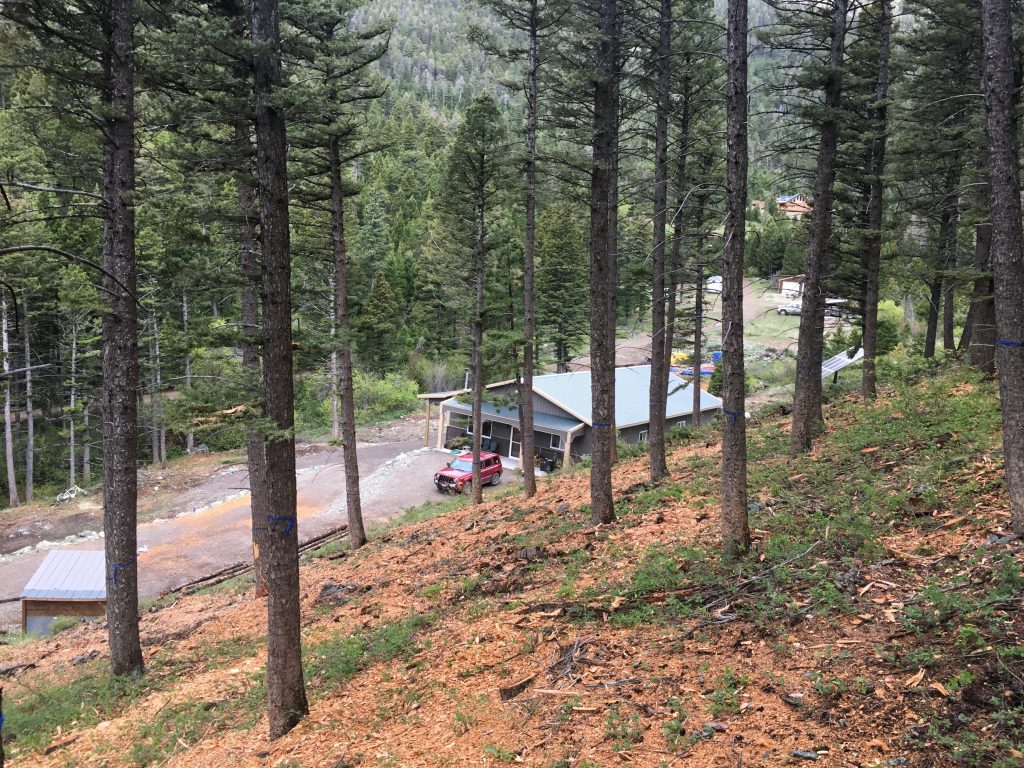
Firescaping and Firewise Plants
Firescaping is a landscaping technique focused on reducing wildfire risk around homes and other structures. It involves strategic plant selection, placement, and the use of fire-resistant materials to create defensible spaces and minimize the potential for fire spread. Core principles include: Firewise Plant Selection Creating Defensible Space Performing Regular Maintenance.
Firewise Plants are plants that are less susceptible to ignition and slower to burn because they are high in moisture, soap (saponins), pectin, and/or latex content; small in size; have minimal amounts of volatile oils and resins; and usually can withstand some amount of drought. These plants help create a fire-resistant landscape within the home ignition zone.
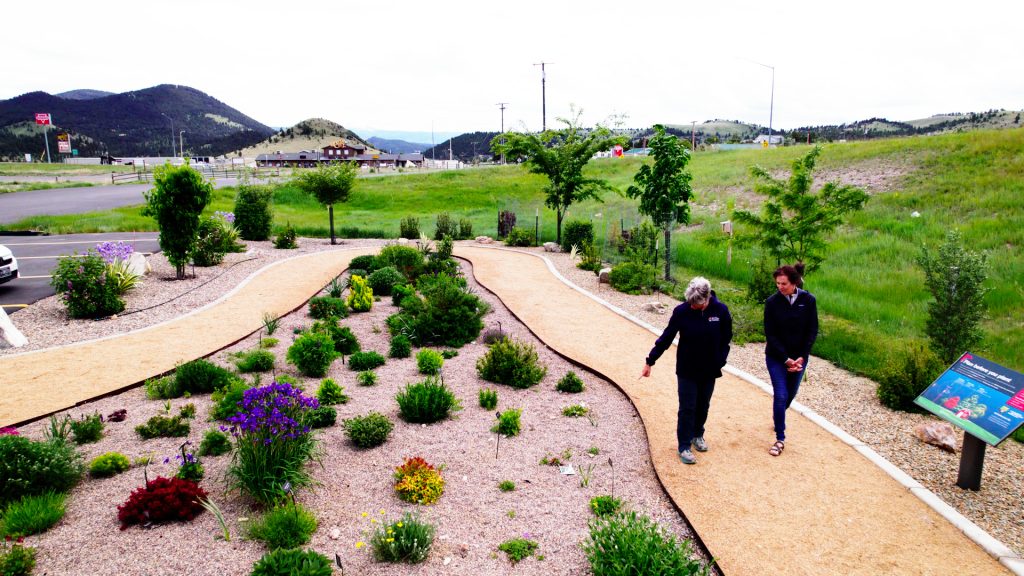
Evacuation Preparedness
When the wildfire comes, will you be ready? The geography, weather patterns and number of homes in the Wildland Urban Interface (WUI) make the tri-county area susceptible to intense wildfire. As wildfires continue to increase each year in Montana, make sure to protect yourself and your family – plan, prepare and stay aware. Property owners and residents in areas at risk are encouraged to take these steps to be ready in case an evacuation is ordered.
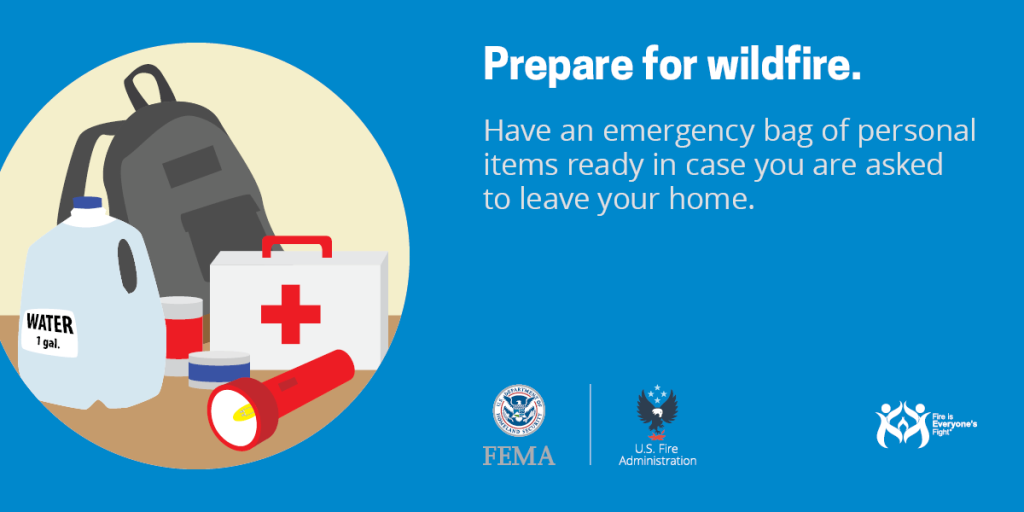
Ready
Get Ready. Create and maintain defensible space and harden your home against flying embers.
Set
Get Set. Prepare your family and home ahead of time for the possibility of having to evacuate. Ensure you have a plan of what to take and where to go. Keep a bag of essentials packed and in your car. Talk with your family members about where to meet in case of an emergency.
Emergency Supply Kit Checklist
- Face masks or coverings
- Three-day supply of non-perishable food and three gallons of water per person
- Map marked with at least two evacuation routes
- Prescriptions or special medications
- Change of clothing
- Extra eyeglasses or contact lenses
- An extra set of car keys, credit cards, cash or traveler’s checks
- First aid kit
- Flashlight
- Battery-powered radio and extra batteries
- Sanitation supplies
- Copies of important documents (birth certificates, passports, etc.)
- Don’t forget pet food and water!
Always keep a sturdy pair of shoes and a flashlight near your bed and handy in case of a sudden evacuation at night. For more information on emergency supplies, visit www.ready.gov
Go!
Go! When wildfire strikes, go early for your safety. Take the evacuation steps necessary to give your family and home the best chance of surviving a wildfire. Know your evacuation route. The following attachment and links provide information to area evacuation plans and information.
